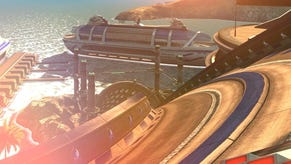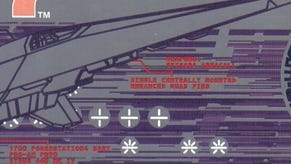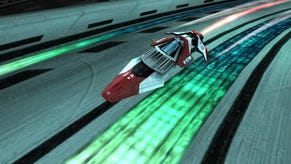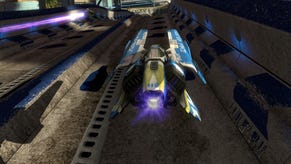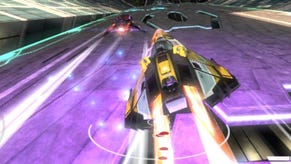WipEout HD
The PSP games wash up good.
Games that straddle the PS3-PSP divide tend to be re-released PSone titles, or games with graphics and gameplay simple enough to avoid awkward questions, like echochrome, but WipEout HD is a welcome exception. After two excellent PSP games, both of which introduced new tracks and gameplay modes, a download-only PS3 release based on the same content makes a nice precursor to the inevitable full-scale return of Sony's futuristic racing game. It's taken ages to arrive, but the goal - pin-sharp 1080p gameplay at 60 frames-per-second - is lofty enough to justify it.
As with the PSP game, Campaign mode scatters different event types across a hexagonal grid interface, lets you pick from a couple in the centre and unlocks adjacent hexagons as you complete them. There are straightforward races; speed laps, where you're given a target lap time and seven laps to try and beat it; time trials, where the target time is for several laps; tournament, where you complete a sequence of races accumulating points for each finishing position; and Zone, where the speed increases gradually and you have to survive as long as possible.
Racing is twitchy and precise, requiring more use of the L2/R2 airbrakes as you move up the speed scale. WipEout HD also introduces Sixaxis motion-sensor support to control the craft's pitch, or its pitch and steering, which can be toggled from the in-game menus (although you have to go to the main game options menu to adjust sensitivity). Controlling the game this way is more difficult, initially, but manipulating a whole pad rather than an analogue stick could allow for more precision after prolonged play. As with a lot of motion control schemes, the benefit may struggle to outweigh the inconvenience of learning how to do it all again, but it's not the default option, so we can hardly complain.
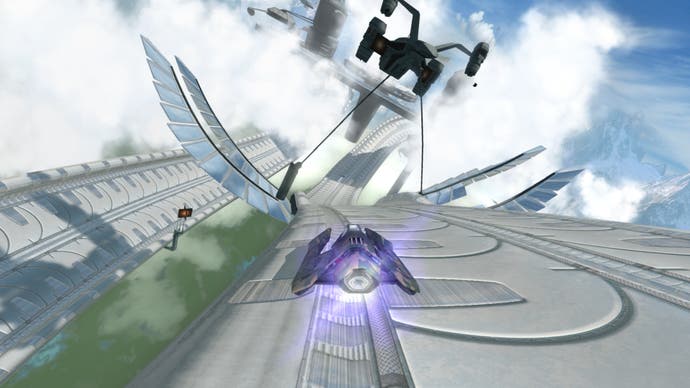
All eight of the game's courses are taken from the PSP releases - six from the first PSP game, Pure, and two from Pulse - but judging by the four we've played the graphics have been upgraded significantly, and knowingly. The speed forces you to concentrate on the centre of the screen, so the undulating, winding, bobsled-style racetracks have dappled and speckled surfaces, grooves and other details like raised boost pads, vents and gratings, and the most elaborate textures and objects are in the immediate periphery, while backgrounds are images and plain buildings that complement the overall effect.
As you race, track surfaces catch the light as your race-craft sweeps elegantly from side to side, steering from the rear, with various track-specific effects. Vineta K, for example, sends you diving into tunnels glimpsing mountains and otherworldly skyscrapers through curved and frosted glass and hexagonal spider-eyes mosaics. The stacked flying-saucer architecture and bright 3D neon projections and adverts in simple colour schemes complete the look, and there are numerous beautiful little touches, like a tiny spaceship hovering around the track projecting your previous performances as ghost race-craft during time trials, dynamic shadowing, and wispy plasma contrails.



